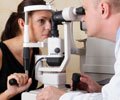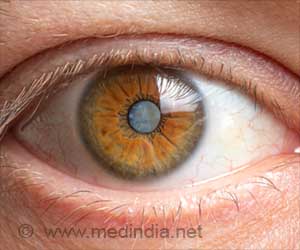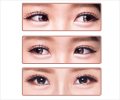New study discovers the changes in brain structures that underlie sight recovery in patients with congenital cataracts, a leading cause of treatable blindness in children and teens

Recovery from Blindness
The investigators teamed up with Project Prakash, a combined humanitarian and scientific effort to restore sight in curably blind children from rural parts of India. They discovered that improvements in visual functions are linked to changes in white matter pathways, which connect neurons in different brain regions.
They studied many pathways, but only those involved in high-order visual functions, such as face recognition, were directly linked to the visual improvement. Moreover, researchers saw that the patient’s amount of change in late visual pathways, specifically the posterior callosum forceps, predicted the amount of behavioral improvement. This is a new result that identifies the location of brain changes responsible for behavioral improvement.
How to Treat Congenital Cataracts?
In the paper titled White Matter Plasticity Following Cataract Surgery in Congenitally Blind Patients published in the journal Proceedings of the National Academy of Sciences of the United States of America (PNAS), the researchers also confirm that cataract surgery has a greater impact on visual function and brain plasticity if received at younger age, but recovery is still possible even if the eye surgery is received later in adolescence.
TOP INSIGHT
![Did You Know]()
Spotting out brain changes could pave the way for better treatment for congenital cataracts, a leading cause of treatable blindness in children and teens.
Read More..
The results suggest that sufficient plasticity remains in adolescence beyond the critical period for visual development, allowing patients to partially overcome abnormal visual development and help localize the sites of neural change underlying recovery in blind teenagers. There is therefore a window of time wider than previously thought, during which sight-recovery surgeries can be useful to improve visual perception by altering structural brain plasticity.
The team’s research shed light on the definition of the sites of neural change related to sight-recovery, which can guide the development of treatments that attempt to induce neural plasticity through behavioral and surgical interventions.
“The new insights uncovered by our team challenge accepted limitations of sight-recovery surgeries, creating an opportunity for the expanded use of these surgeries that will make many more cases of blindness treatable, worldwide,” said Rokers.
“Our work also offers evidence to support the call for the scientific community to reassess the critical period for visual development in adolescents.”
Source-Eurekalert
TOP INSIGHT
Spotting out brain changes could pave the way for better treatment for congenital cataracts, a leading cause of treatable blindness in children and teens.
Read More..
 MEDINDIA
MEDINDIA




 Email
Email









